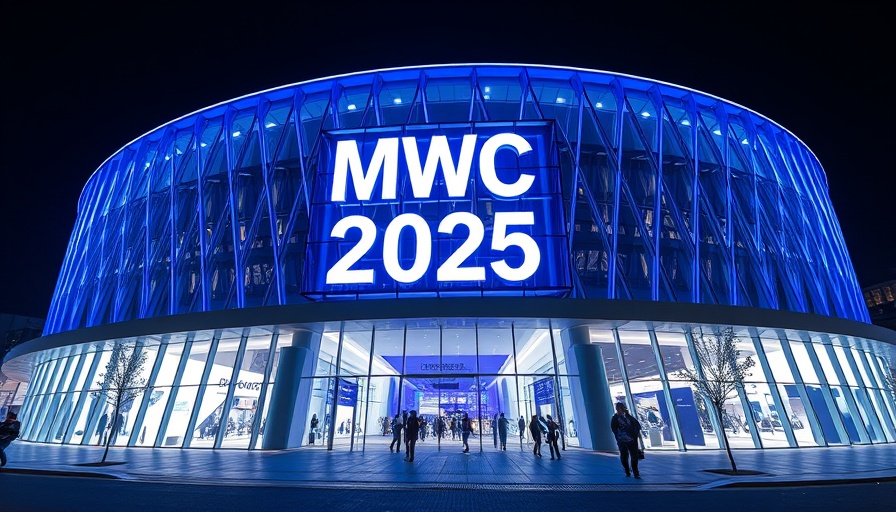
The Evolving Landscape of Disruption at MWC25
The Mobile World Congress 2025 (MWC25), held in Barcelona, attracted 109,000 attendees from across the globe, illustrating the event's continued significance in the telecommunications and technology sectors. This year saw nearly 2,900 exhibitors showcasing innovations, yet the spotlight was notably on the few who truly embodied the spirit of disruption. Amidst a sea of artificial intelligence (AI) claims, only a handful of companies effectively demonstrated how their technologies could alter the existing market landscape.
Highlighting Emerging Talent: Startups Making Waves
Among the 32 companies featured during the congress, six innovative startups emerged with ambitious visions for disruption. Although their technologies are still in the proof-of-concept stage, their potential is significant. For instance, Aerendir Mobile Inc. has introduced a biometric technology that goes beyond traditional identification methods, using micro-vibrations from handheld devices to extract unique brain patterns. While intriguing, it raises questions about data privacy and the implications of such personal information being collected and utilized.
Similarly, Aima's human-like avatars are noteworthy; designed specifically for mental health applications, they leverage AI to offer empathetic interactions. This focus differentiates them from existing customer service-oriented avatar technologies, illustrating a depth of consideration for the applications of AI beyond mere automation.
Established Players Driving Change
While many tech giants were present, their innovative approaches to AI were also geared towards disruption. For instance, Always Connect AI is significantly enhancing network efficiency through predictive algorithms that improve crucial performance metrics for network operators. This offers a clear benefit to both consumer and business realms, establishing a robust framework for future operations.
Capzul Corp. proposed an intriguing approach to network security by obscuring endpoints from visibility on the network, theoretically reducing vulnerabilities. However, as with many technologies, practicality and effectiveness remain to be proven in real-world applications.
A Glimpse into Future Predictions and Insights
The MWC25 discussions underscored a pivotal shift in the telecom landscape, primarily driven by AI convergence with connectivity. Major players, such as telecommunications firms, are exploring ways to create additional revenue streams through new business models. This shift is necessary as operators face increasing pressure to monetize their investments in infrastructure. The stakes are high, making it essential for industry leaders to identify and embrace new disruptions.
Discussion highlights included the call for greater European ambition in reducing reliance on American tech, as voiced by Arthur Mensch of Mistral AI. This imminent challenge presents a ripe opportunity for telecommunications companies to become hyperscalers and invest in localized data center capabilities.
Counterarguments: Challenges and Risks in Innovation
Despite the excitement surrounding these innovations, skepticism persists. Critics argue that many technologies claimed to be disruptive may not deliver upon their promises, especially given the rapid evolution of technology and the nuances involved in real-world applications. There remains a fine balance between innovation and practicality, particularly in sectors where user trust and security are paramount.
Broader Implications and Future Directions
As AI advances and becomes further integrated into telecommunications, the implications extend far beyond business. The technology has the potential to redefine not just operational practices but also social interactions, privacy paradigms, and economic structures globally. Driven by notable discussions at MWC25, industry executives must consider how to adapt and align their strategies to leverage these rapid changes.
Conclusion: The Need to Forge Ahead
As MWC25 concluded, the resounding call was clear: industry leaders must embrace disruption and innovation while navigating challenges such as competition, regulation, and user privacy. Attendees walked away with valuable insights into actionable strategies that can reshape the future of mobile technology, encouraging an environment where technology innovation thrives and societal needs evolve hand-in-hand.
 Add Row
Add Row  Add
Add 




Write A Comment